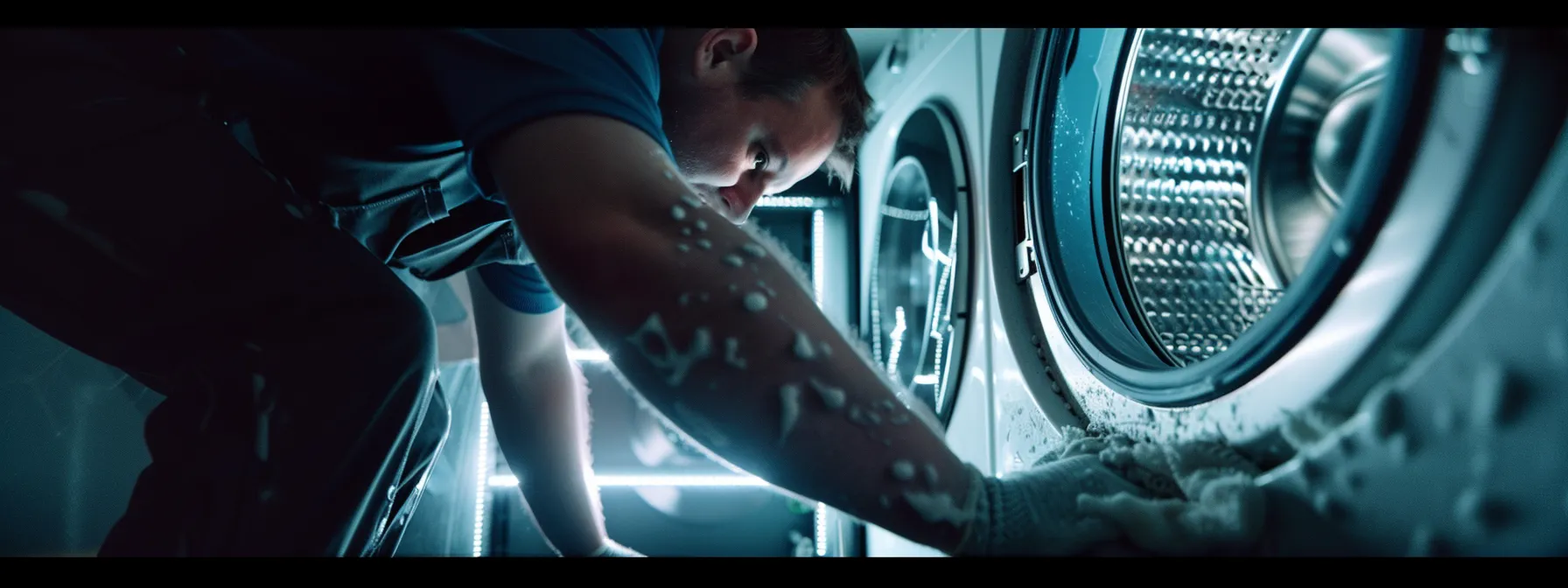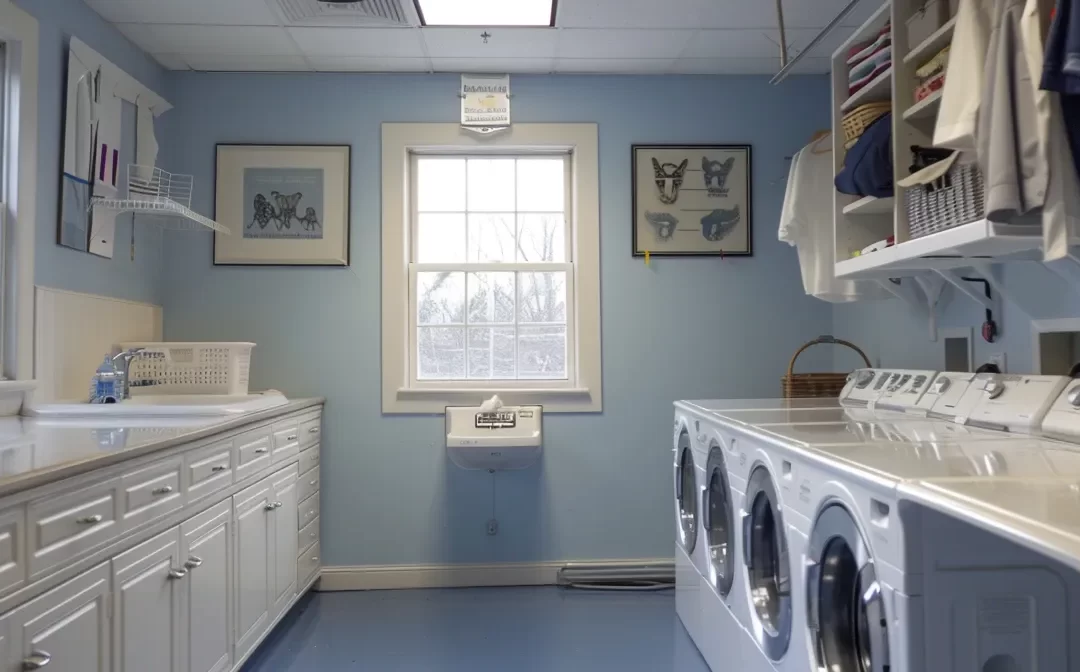Why Dryer Vent Cleaning Enhances Home Safety
Every year, thousands of homes face fire hazards due to clogged dryer vents. Dryer vent cleaning is not just a maintenance task; it is vital for home safety. This article will explain the importance of regular dryer vent cleaning, outline the direct benefits of keeping vents clear, and clarify how often homeowners should schedule these services. By understanding these points, readers will recognize how proper maintenance can protect their homes and families from potential dangers, ultimately allowing them to feel more secure in their living spaces.
Understanding the Importance of Dryer Vent Cleaning for Safety

Clogged dryer vents present a significant fire hazard due to accumulated lint, necessitating regular duct cleaning to enhance the safety and efficiency of clothes dryers. Homeowners should be vigilant in identifying signs of blocked vents, such as longer drying times and unusual heat. Understanding the connection between dryer vents and carbon monoxide risks is essential for maintaining a safe home environment.
Recognizing the Fire Hazard Linked to Clogged Vents
Clogged dryer vents can create a serious fire hazard, as accumulated lint can ignite and cause devastating damage. Homeowners should pay attention to signs of wear on their dryer, such as longer drying times and excessive heat, which may indicate blocked vents. By having dryer vents cleaned regularly, particularly in neighborhoods with higher fire risks, residents can significantly reduce the danger of fire and carbon monoxide buildup in their homes.
Identifying Signs of a Blocked Dryer Vent
Homeowners should be alert to several signs indicating the need for dryer vent cleaning. An increase in drying times often signals potential blockage, as debris accumulates in the ventilation system. Additionally, the presence of unusual odors, such as mildew or mustiness, can further suggest that clean dryer vents are necessary to ensure effective airflow.
Understanding the Connection Between Dryer Vents and Carbon Monoxide Risks
Blocked dryer vents can lead to serious risks beyond fire hazards, including compromised indoor air quality. When lint accumulation—often made of fibers such as cotton and microfiber—restricts airflow in the machine, it can contribute to the buildup of harmful gases, like carbon monoxide, particularly in gas dryers. Regular dryer vent cleaning is essential to maintain proper ventilation, not only enhancing dryer efficiency but also ensuring a safer environment by minimizing these risks to indoor air quality.
The Direct Benefits of Regular Dryer Vent Maintenance

Routine dryer vent cleaning significantly reduces fire hazards by removing lint buildup that can ignite during operation. Clean vents enhance energy efficiency, allowing dryers to operate optimally while minimizing odors that may arise from blockages. Furthermore, proper maintenance decreases wear and tear on the appliance, ensuring longevity and reliable performance in the laundry room.
Reducing Fire Risks Through Routine Cleaning
Regular dryer vent cleaning plays a crucial role in enhancing fire safety by ensuring optimal airflow within the ventilation system. By removing dust and lint buildup, homeowners can significantly reduce the risk of fires caused by overheating appliances. Moreover, maintaining clean vents lowers moisture levels in the dryer, which helps prevent mold and mildew growth and further ensures a safer laundry environment.
Enhancing Energy Efficiency With Clean Vents
When dryer vents are cleaned regularly, homeowners can experience a marked enhancement in energy efficiency. According to the National Fire Protection Association, clogged dryer vents force appliances to work harder, leading to increased energy consumption. This not only impacts utility bills but can also create an environment conducive to mold growth due to excess moisture, further underscoring the importance of having dryer vents cleaned to maintain optimal performance and safety.
Minimizing Wear and Tear on Your Dryer
Regular dryer vent cleaning plays a vital role in minimizing wear and tear on dryers. By removing accumulated lint, homeowners can protect their appliances from stress caused by limited airflow. This maintenance not only extends the lifespan of the dryer but also helps prevent potential carbon monoxide risks that may arise from blocked vents, ensuring a safer home environment.
How Often Should You Schedule Dryer Vent Cleaning?

Scheduling regular dryer vent cleaning is essential for maintaining home safety. Homeowners should consider the recommended cleaning frequency based on their usage patterns and seasonal changes. Evaluating personal usage helps determine how often vents require maintenance, while seasonal considerations ensure optimal airflow and safety throughout the year. This section will provide practical insights into these key factors, enhancing the effectiveness of dryer vent care.
Recommended Cleaning Frequency for Safety
Homeowners should ideally schedule dryer vent cleaning at least once a year to ensure optimal safety and performance. For those with higher usage, such as families who do multiple loads of laundry each week, biannual cleanings may be necessary to prevent lint buildup and maintain proper airflow. Regular maintenance not only enhances dryer efficiency but also significantly reduces the risk of fire hazards, ensuring a safer living environment for all residents.
Evaluating Personal Usage and Its Impact
When assessing how often to schedule dryer vent cleaning, homeowners should closely consider their laundry habits. Frequent washers, such as families with multiple children, may experience lint buildup more rapidly, necessitating cleanings at least twice a year. By aligning maintenance with usage patterns, individuals can significantly reduce fire risks and enhance overall dryer efficiency, ultimately contributing to a safer home atmosphere.
Seasonal Considerations for Vent Maintenance
Seasonal changes significantly impact dryer vent maintenance, making it essential for homeowners to adjust their cleaning schedules accordingly. During colder months, humidity levels may rise, leading to increased lint accumulation and airflow restrictions. Consequently, scheduling dryer vent cleaning in the fall and spring can help ensure optimal performance, enhance home safety, and reduce the risk of fire hazards.
DIY vs. Professional Dryer Vent Cleaning

Homeowners can choose between DIY and professional dryer vent cleaning based on their needs. Assessing when to call experts is crucial for safety and effectiveness. For those who prefer doing it themselves, key steps for effective cleaning and essential tools will be highlighted. Understanding both options ensures that dryer maintenance contributes to home safety and efficiency.
Assessing When to Call in Experts
Homeowners should evaluate their comfort level and the extent of lint buildup when deciding whether to attempt DIY dryer vent cleaning or call in experts. If indicators of blockage, such as excessive drying times or unusual odors, are present, it may be wise to seek professional help to ensure thorough and safe cleaning. Experts possess the knowledge and specialized equipment necessary to effectively mitigate fire hazards and enhance indoor air quality, providing peace of mind that routine maintenance is performed correctly and efficiently.
Key Steps for Effective DIY Cleaning
Effective DIY dryer vent cleaning begins with gathering the right tools, which typically include a vacuum with a hose attachment, a dryer vent cleaning brush, and possibly a screwdriver for removing the vent cover. Homeowners should start by disconnecting the dryer from the power source, allowing for safe access to the vent. By carefully brushing and vacuuming the vent, individuals can remove accumulated lint and debris, ensuring proper airflow and reducing fire risks, ultimately enhancing home safety through diligent maintenance.
Essential Tools for Homeowners
For homeowners considering DIY dryer vent cleaning, essential tools include a vacuum with a hose attachment, a dryer vent cleaning brush, and a screwdriver. These items allow effective removal of lint and debris, ensuring proper airflow and reducing fire risks. Properly using these tools can help maintain dryer efficiency and enhance overall home safety by keeping vents clear and functional.
Understanding Dryer Vent Cleaning Costs

Budgeting for regular dryer vent cleaning is crucial for maintaining home safety. This section will address the long-term savings that come from preventative care, emphasizing how investing in routine maintenance can reduce costly fire hazards and improve appliance efficiency. By understanding these aspects, homeowners can make informed decisions that enhance both safety and financial well-being.
Budgeting for Regular Maintenance
Homeowners must consider the impact of budgeting for regular dryer vent cleaning as a vital part of home maintenance. Investing in this service not only enhances safety by reducing fire risks but also prevents costly repairs that can arise from neglected appliance upkeep. By allocating funds for routine cleaning, individuals can ensure their dryer operates efficiently, ultimately helping them save on energy costs and prolonging the lifespan of the appliance.
Long-Term Savings From Preventative Care
Investing in regular dryer vent cleaning can lead to substantial long-term savings for homeowners. By preventing lint buildup, homeowners minimize the risk of costly repairs associated with fire hazards or appliance breakdowns. Over time, routine maintenance not only enhances energy efficiency but also prolongs the lifespan of the dryer, ensuring that families enjoy a safer home environment while avoiding unexpected expenses.
Case Studies on Improved Safety Post Cleaning

Real-life examples demonstrate how regular dryer vent cleaning has effectively prevented fires in numerous households. Testimonials from homeowners highlight the positive impacts of maintenance, emphasizing improved safety and peace of mind. Furthermore, statistical insights reveal significant reductions in fire incidents linked to proper dryer vent care, showcasing the essential role of routine cleaning in enhancing home safety.
Real-Life Examples of Prevented Fires
Several households in Houston have reported significant improvements in safety following professional dryer vent cleaning. One homeowner shared that after a thorough cleaning, their dryer performance increased dramatically, eliminating persistent issues like longer drying times and strange odors. As a result, they not only reduced the risk of fire hazards linked to lint buildup but also gained peace of mind knowing their home environment was much safer.
Testimonials From Homeowners on Maintenance Impact
Homeowners who have experienced professional dryer vent cleaning often share compelling accounts of improved safety and efficiency. For instance, one family noted a significant reduction in drying times after their vent system was thoroughly cleaned, which alleviated their concerns about potential fire hazards linked to lint buildup. Another homeowner expressed relief at eliminating unpleasant odors, attributing their newfound peace of mind to regular maintenance that not only enhanced dryer performance but also contributed to a safer living environment.
Statistical Insights on Dryer Safety Improvements
Statistical data underscores the significant safety improvements associated with regular dryer vent cleaning. Studies indicate that homes with clean dryer vents experience up to a 90% reduction in fire risks related to lint accumulation. Furthermore, the National Fire Protection Association reports that routine maintenance not only prevents nearly 2,900 annual dryer fires but also helps maintain better indoor air quality, ensuring a safer living environment for families.
Conclusion
Regular dryer vent cleaning significantly enhances home safety by reducing fire hazards associated with lint accumulation. Homeowners can protect their families and property by recognizing signs of blocked vents and scheduling cleanings at appropriate intervals. Investing in routine maintenance also improves dryer efficiency and indoor air quality. Prioritizing this essential service allows residents to maintain a safer, more efficient home environment while minimizing potential risks.

Recent Comments